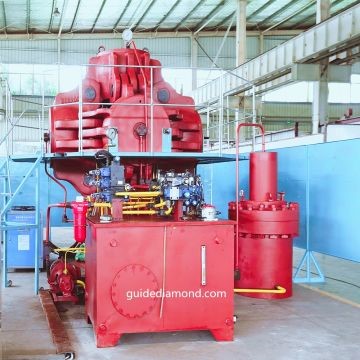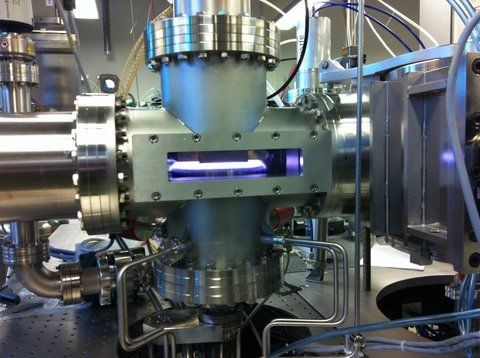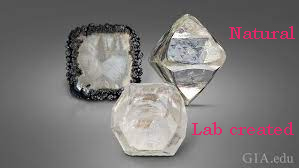The Sparkling Popularity of the Lab Grown Diamonds
Sunday, September 26, 2021
Responsible buyers have been steadily falling out of love with the traditional, mined diamonds for quite some time. Natural diamonds come at steep humanitarian and environmental costs. Millennials and Gen Z are breaking away from the prevalent 'diamonds are forever' practice to embrace lab-Grown alternatives.
Lab-Grown or lab-created diamonds are a more sustainable alternative to conventional mined, natural diamonds. First things first, lab-diamonds are not counterfeit or imitations of natural diamonds. It is a real diamond – physically, optically, and chemically identical to a natural, mined diamond. These diamonds are crafted in a laboratory using advanced technology to imitate the geological conditions that natural diamonds experience when forming in the Earth's mantle.
Why choose lab-Grown diamonds?
• Mining free alternative – Lab diamond is a more responsible option as it does not require mining.
• Quality and beauty – Lab-Grown diamonds do not compromise either on quality or beauty as they share the same attributes as mined diamonds.
• Value – Lab diamonds offer superior value and are slightly less expensive than mined diamonds of comparable quality and size.
What are lab Grown diamonds?
Lab diamonds, also known as synthetic, cultured, or engineered diamonds, are grown in the highly controlled environment of a laboratory employing a series of advanced technological procedures. These processes replicate natural conditions. These lab-grown diamonds include actual carbon atoms arranged exactly in the distinctive crystal composition witnessed in a natural diamond. Since both these specimens consist of the same chemicals, both natural and man-made diamonds exhibit the same physical and optical properties.
Lab Growndiamonds are available in a wide array of colorless varieties. These diamonds are also available in a diversity of fancy colors rarely found in nature, including shades of vivid fancy yellow. Fancy lab diamonds are comparatively reasonably priced when compared with their natural, colored counterparts.
How are lab diamonds made?
Small carbon diamond seeds from existing diamonds are created into a lab diamond. There are two processes to craft lab grownd diamonds.
• High Pressure, High Temperature (HPHT)

HPHT machine
This method mimics the high temperature and high-pressure condition of a natural diamond to produce a synthetic diamond in a laboratory. HPHT diamond grows at a pressure of 5-6GPa. This is roughly equal to the pressure a commercial jet plane will exert if balanced on a person's fingertip! The temperature varies within the range of 1300°C and 1600°C.
Both synthetic and natural, lower-quality diamonds also find a new lease of life with this unique procedure. The HPHT process helps improve the clarity and color of the diamond. In addition to removing the color from a diamond, this process can also help to change the hue of diamonds into yellow, blue, or pink. Such diamonds are “treated” diamonds. Treated diamonds usually come with a certificate authenticating their source and treatments undergone.
• Chemical Vapor Deposition (CVD)

CVD is a more recent innovation in the world of lab-grown diamonds. This technique allows scientists to create diamonds using lower pressure and moderate temperature varying between 700°C and 1300°C. The process entails pumping carbon-containing gas onto a diamond seed. The carbon-containing gas crystallizes on the seed in a vacuum chamber. The gas begins to precipitate on the seed and a diamond is grown atom by atom. A longer precipitation window means a larger diamond.
The technologies behind lab grown diamonds have witnessed newer inventions in the field. These advancements in recent years allowed companies to come up with superior quality diamonds cheaper and faster. It has meant intensifying competition between mined diamonds and lab-growndiamonds.
Lab-grown colored diamonds have varying amounts of particular trace elements that contribute to their color, much like their natural counterparts. In both fancy colored and colorless lab grown diamonds, the precise constitution of trace elements may vary from natural diamonds. However, a lab grown diamond can be identified from a natural diamond only by using specialized technology to detect minute differences in crystal growth and trace elements.
How are lab-grown diamonds different from diamond simulants?
Diamond simulants are different from lab grown diamonds. Their primary and crucial component is composition! Though moissanite and cubic zirconia looks similar to diamond, they are not carbon crystals. Simulants have different physical and chemical properties than natural diamonds. Hence, they sell at a much lower price bracket than lab-creasted diamonds. You can distinguish a simulant from a lab grown or natural diamond with your naked eye!
Natural and lab diamonds possess specific thermal conductivity characteristics that separate them from cubic zirconia. This difference can be easily identified with even a handheld diamond testing machine. Gemologists can generally distinguish between moissanite, and diamond simply by their differing refractive feature, with diamonds (lab grown and natural) being single refractive whereas the simulant being double refractive.
How to differentiate natural diamonds from lab-grown diamonds?

It is virtually impossible to tell the two diamonds apart even with technology! Superior quality lab diamonds exhibit the same optical, physical, and chemical characteristics as natural diamonds. They display the same sparkle, scintillation, and fire. A jewelry loupe can't help you separate one from the other. Specialized equipment is necessary to distinguish a lab grown diamond from a natural diamond. Any reputable jeweler will ensure that your lab-create-d diamond is accompanied by a gem certificate determining it as laboratory-grown.
Are lab grown diamonds more affordable than natural diamonds?
Lab diamonds offer value for money, and they are less expensive than natural, mined diamonds of comparable quality and size. Knowing your stone's quality and identity is critical, and a detailed diamond report can help you with that.
Are lab grown diamonds flawless?
Just like a natural diamond, lab diamonds also vary in clarity, cut, and color. Each lab diamond is a unique specimen. Lab diamonds may include minor surface or internal inclusion, comparable to superior quality natural diamonds. Lab-grown diamonds are assessed and graded by trusted, independent gemological laboratories that use the exact, strict standards used to certify and grade natural diamonds.
Do lab grown diamonds get opaque?
Lab grown diamonds are chemically the same as natural diamonds. Hence, they are highly durable and do not get cloudy over the years. Rest assured that few can differentiate your lab diamond engagement ring from that exorbitantly priced naturally, mined diamond. This is the real deal.
Can my lab diamond turn out to be moissanite?
That is highly unlikely, if not impossible. A lab diamond may be erroneously identified as a stimulant (moissanite) by some testers due to their similar thermal conductivity parameters. Nevertheless, professionals can effectively differentiate between these two stones owing to their contrasting refractive properties.
Are lab grown diamonds considered as a good investment?
Customers searching for a mining-free, and responsible alternative to a bigger stone within a budget may opt for lab diamonds over a naturally mined one. Lab diamonds can be found at the lower end of the price point compared to mined, natural diamonds. As with any precious or semi-precious gemstone, the resale value varies over the years. Since lab grown diamonds are regarded as a recent introduction to the gemstone industry, their future pricing faces more uncertainty, in comparison with natural diamonds.
Is it possible to insure lab diamonds?
Yes, just like a natural, mined diamond, lab-grown diamonds can be easily insured. It is an excellent way to safeguard your investment in that sparkly promise.